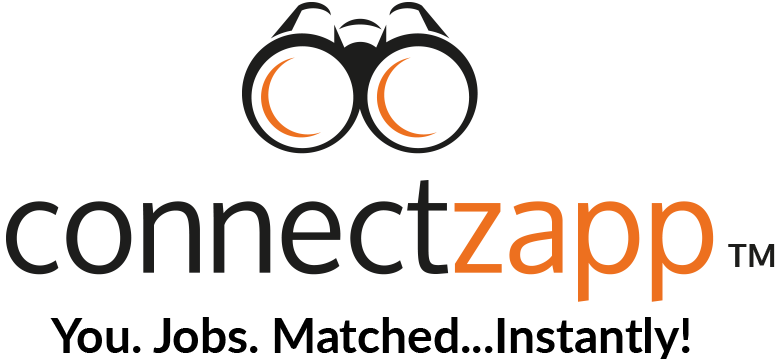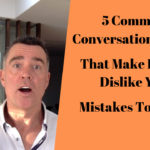7 Things Your Body Language Says About You
You probably already know that when we‘re in a conversation, our body language gives a lot away about how we’re feeling and what we’re thinking.
What if you could project the body language you want to project when you’re in a conversation with someone else, particularly a hiring manager when you’re in an interview, so they get the message you want them to?
Well… when you’re aware of what you’re body is doing when you’re talking with someone else, and you know what your body should be doing to project the message you want it to, then you can project the message you want to project in that conversation.
This is a great skill to have, particularly when you’re presenting to other people. And it’s particularly handy to know how to do when you’re in an interview.
So today, let’s go through 5 things your body is saying about you when you’re in a conversation with another person, so your body language projects the message you want it to.
Before I get into it, keep in mind that the easiest way to be offered a job, is when the company already knows you’re a great candidate and they want to hire you.
An easy way to put your self in that position is to use Connectzapp because by using Connectzapp, employers can see you’re a great candidate for a job so they want to talk to you.
The way it works is you enter the details of the job you’re after.
You’re then given a list of jobs that best suit what you’re looking for, ranked in order, with the best match appearing first.
You then swipe through each job, choose the one’s you’re most interested in, put those into a shortlist, then contact those employers direct.
It’s easy and it’s quick. And the best part is, the employers on your shortlist can see you’re a good candidate for the job, so they want to talk to you.
So give it a try.
Go to connectzapp.com or get the app.
When you’re in an interview, you want to give yourself the best chance to impress the hiring manager so you get the job obviously, so here are 7 things you can do with your body language to help you do that.
1. Give The Other People You’re In The Conversation Your Full Attention
The first tip is to give the person or people you’re speaking with your 100% focus.
In other words, be 100% engaged in the conversation.
Nobody likes to speak to someone who is not fully engaged in a conversation with them.
We’ve all been in a conversation where the person we’re speaking with is distracted, or if you’re in a room with lots of other people, and the person you’re speaking to is constantly looking around the room as if they’re trying to find someone else better to speak to.
When the person you’re speaking to does this, they’re saying to you they’re not interested in what you have to say.
None of us like to be in this situation, so the first tip is to give the person or people you’re speaking with your undivided attention, so they feel like you’re engaged in the conversation and interested in them.
2. Don’t Respond Immediately To Interruptions
The second tip is to not respond immediately to interruptions when someone is speaking with you.
When someone is talking with you, then another person tries to break into the conversation by talking to you, the best signal you can give in this situation is to ignore the person trying to break into the conversation, until the person who was originally talking has finished speaking.
This is about respect and showing the person you were originally speaking with that you value what they have to say and they have your full attention.
Then when they’ve finished speaking, you can then turn your attention to the new person and give them your full attention when you respond to their question or comment.
By doing it this way, you’re showing the person you were originally speaking with, that you value speaking with them and value them as a person.
Then when you turn you attention to the new person, and give them your full attention, you’re then also showing them that you value what they have to say, and value them as person.
So by not responding immediately to someone who tries to break into conversation you’re already in, you’re showing the person you’re currently speaking with and the new person who has attempted to join the conversation, that you value what they have to say and value them as a person to let them finish speaking and respond.
3. Hands In Pockets
The third tip is to keep your hands out of your pockets.
When you have your hands in your pockets in a conversation, particularly in an interview, it sends the wrong message to the person you’re speaking with.
They make you look nervous or unsure of the situation you’re in.
Unless it’s really cold, keep your hands out of your pockets.
You can use your hands to accentuate a point you’re trying to make. If you have your hands open showing your palms, people consider you more trustworthy because you’re showing you don’t have anything to hide. The person you’re speaking with will consider you to be more truthful.
Some people cross their arms when they don’t want to put the in their pockets. This is OK in some situations, but keep in mind that crossed arms is a closed off gesture, so the person you’re speaking with may take your crossed arms as you’re not amenable or agreeing to what their saying.
So tip number 3 is to pay attention to what your hands are doing.
4. Hanging Your Head In Shame
The fourth tip is to not hand hang your head in shame.
If you’re speaking with someone and they correct you on something or you get something wrong, don’t lower your head and apologize. It gives the person you’re speaking to the impression that something is wrong.
Hold your head up, smile and acknowledge you misunderstood or whatever it was and then move on.
When you put your head down, or look at your feet, you’re signaling to the person you’re speaking with that things are worse than they actually are, so keep your head up and smile.
It’ll also help you feel better too.
5. The Eyebrow Lift
The fifth tip is something that’s probably more subconscious than not, but I’ll cover it anyway, and that’s how we all lift our eyebrows quickly when we’re pleasantly surprised.
We all do it when someone tells us good news or we meet someone who we feel positive about.
This is great to do when you first meet a hiring manager, or do in an interview, because it sends a subtle signal to the hiring manager that you’re interested in what they’re saying and you’re positively engaged in the conversation.
So if you can add a subtle and very quick eyebrow lift when you meet the hiring manager and smile warmly, you’ll start things off on the right foot.
And lastly…
Good luck with your job hunting!




